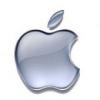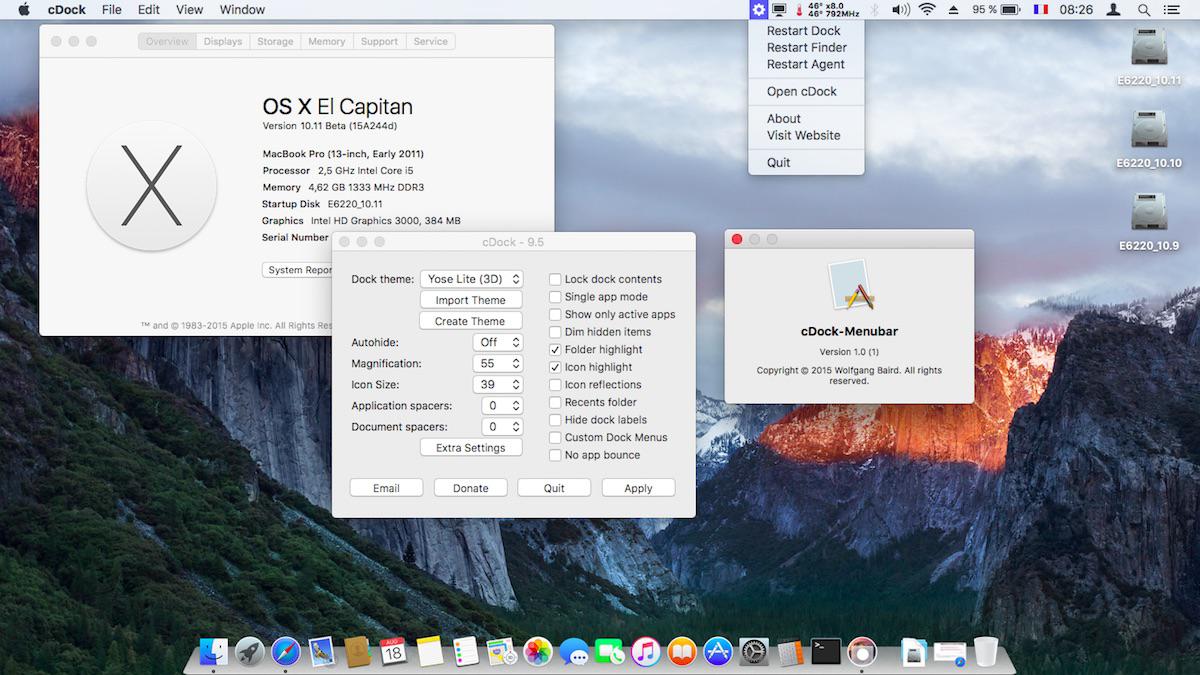-
Posts
10067 -
Joined
-
Last visited
-
Days Won
569
Content Type
Profiles
Articles, News and Tips
Forums
Everything posted by Hervé
-

E6320 with HD3000 - Booting Yosemite with Dell Docking Station
Hervé replied to simonjohnharris's topic in The Archive
I re-tested my E6220 with patched SNB framebuffer kext on my Port Replicator. Results were as I expected: DVI no longer worked but VGA did. --> Therefore, we simply need to identify which vanilla display port line natively supports DVI output on those laptops and reinstate it alongside the patched HDMI + VGA lines. It's a fairly quick and simple task of testing different combinations... Vanilla SNB framebuffer kext: 01 02 04 00 10 07 00 00 10 07 00 00 // Nb of connectors -> "04" 05 03 00 00 02 00 00 00 30 00 00 00 // built-in laptop display 02 05 00 00 00 04 00 00 07 00 00 00 // display port 03 04 00 00 00 04 00 00 09 00 00 00 // display port 04 06 00 00 00 04 00 00 09 00 00 00 // display port Existing E6220 patched SNB framebuffer kext: 01 02 03 00 10 07 00 00 10 07 00 00 // Nb of connectors reduced to 3 -> "03" 05 03 00 00 02 00 00 00 30 00 00 00 // unmodified line for laptop built-in display 02 05 00 00 00 08 00 00 06 00 00 00 // HDMI display port 06 02 00 00 00 04 00 00 09 00 00 00 // VGA display port 00 00 00 00 00 00 00 00 00 00 00 00 // Unused, dead line We can therefore reinstate the number of connectors to 4 and, on the basis that display port line starting with "02 05" corresponds to HDMI output, try to retrofit the 4th and unused display port line to one of the settings below: 03 04 00 00 00 04 00 00 09 00 00 00 or 04 06 00 00 00 04 00 00 09 00 00 00 -
Extract of lspci -nn command would have been better as it would have shown the device ids of the HW components too but never mind.
-
Great, but how about a guide or details of the procedure you followed and, most importantly, a pack with the various kexts and tables you used? Could you also provide a detailed lspci-type extract of hardware information + USB device info out of the SysProfiler so that we can get the specific hardware components identification (eg: LAN, Camera, card reader, etc.) ?
-
I've got no specific version to recommend. I would suggest you simply use the latest available one on the repo.
-
Basically, you need to install Clover properly on your HDD Yos partition. Tell us how you've tried to install it, list the options you selected, ideally post a screenshot and we'll then see what you can try. Alternatively, switch to Chameleon, it's far simpler, just less powerful. But now that you've installed OS X on the Optiplex...
-

E6320 with HD3000 - Booting Yosemite with Dell Docking Station
Hervé replied to simonjohnharris's topic in The Archive
I guess you were still using the VGA port out of the replicator, not the DVI one. I have a feeling that DVI output may only be supported under the vanilla SNB framebuffer kext and VGA under the patched version. VGA may also be limited to direct laptop output, not port replicator. This would mean that the patch needs to be further refined to be able to support HDMI + DVI + VGA on top of built-in LVDS screen; so we would be back to 4 ports, not 3 as supported by the current patch and port number for VGA may have to be modified for port replicator (which could mean it's either the laptop's port or the replicator's, not both). I'll work on it tomorrow, it should not be difficult to suss out. I expect the patch to be the same for all E6x20 models. Can you try with external display directly connected to the laptop, then do Detect Displays and/or put laptop to sleep then wake it? With the patched SNB kext, that should extend display to the external screen. If it does, then try and do the same with the laptop docked in. -
Well, you can play around with the idle % settings in the AGPM kext plist to try and tune GPU throttling. I fully agree that if you use default settings, you may experience the odd lag at kicking the GPU into boost modes. You can therefore adjust levels at which you want GPU to boost frequencies and, by repeated trial, hopefully obtain a level of performance that suits you. It's stated in the thread. You may not have noticed that in the code I posted, I had actually modified those idle % levels in my add-on plist entry.
-

E6320 with HD3000 - Booting Yosemite with Dell Docking Station
Hervé replied to simonjohnharris's topic in The Archive
I have to say I booted the E6220 with lid opened and the external display already connected to DVI port. The external display was auto-detected and with correct resolution. Will try to boot with lid closed again tomorrow and see the behaviour. Make sure you use the patched SNB framebuffer kexts to properly support VGA output (note that DVI output from Port replicator works with 10.10.5's vanilla SNB kext - that's what I was running on). Full details of the HD3000 VGA patch are provided in Dinesh's dedicated HD3000 thread on the matter in R&D section or here in the specific case of the E6220. Do not press Fn-F8 under OS X, it will indeed screw up your display both on external and built-in screens. However, if you do, you can recover by putting computer to sleep, then wake it. The patched SNB framebuffer normally support auto-detection of VGA output. If required, click on the "Detect displays" button in the display PrefPane (requires you to press [Alt] or [Win] key 1st) or put laptop to sleep, then wake it. The patched SNB framebuffer kext I use in 10.10.3/10.10.4 on the E6220 is available here. For Sleep, usual thing: check your hibernation mode (set to 3 by default, must be disabled, i.e. set to 0) and delete any existing sleepimage file. sudo pmset -g sudo pmset hibernatemode 0 sudo rm -f /var/vm/sleepimage -

HP Elitebook 8560w - Hackintosh with OSX Yosemite
Hervé replied to pri6aleca321's topic in The Archive
Try it by all means. You can build your Yosemite USB installer using the usual well-know procedure posted in many posts here, then install Clover on the key and copy files from the Mavericks bootpack to the Clover folders. You may have to spend some time finding the right tuning for Clover though, that's often the issue with that sophisticated but powerful bootloader. Can't say if the Quadro 1000M will be supported in Yosemite though but I'd say so; you'll have to research that too. Can't remember which chip it is based on. But, generally speaking, a GPU supported under Mavericks is also supported under Yosemite.- 2 replies
-
- HP Elitebook 8560w
- OSX Yosemite
-
(and 1 more)
Tagged with:
-
Here are BIOS settings that are known to work on the E6220 (Intel Sandy Bridge CPU with Intel HD3000 graphics) under Mavericks, Yosemite, El Capitan, Sierra, High Sierra, Mojave and Catalina. These settings were tested and verified with BIOS up to version A14. Boot Sequence: . Diskette drive = Off . Internal HDD = On . USB Storage Device = On . CD/DVD/CD-RW Drive = On . Onboard NIC = Off . Boot List Otion = Legacy or UEFI (but USB installer can only be booted legacy) System Configuration . Integrated NIC = Enabled . Parallel Port = Disabled (you may opt for any other options if required) . Serial Port = com1 . SATA Operation = AHCI . Drives: * SATA-0 = On * SATA-4 = On * SATA-5 = On . USB Configuration: * Enable Boot Support = On * Enable External USB Port = On . Keyboard illumination = Level is 100% or any other settings. This applies to backlit keyboards only . Miscellaneous Devices: * Enable Microphone = On * Enable eSATA Ports = On * Enable Hard Drive Free Fall Protection = On * Enable ExpressCard = On * Enable Camera = On * Enable Media Card = On Video: . LCD Brightness = Max or whatever settings you prefer Security: . Admin Password = not set . System Password = not set . Internal HDD-0 PW = not set . Strong Password = Off . Password Configuration = default settings . Password Bypass = Disabled . Password Change: Allow Non-admin Password Changes = selected . Non-Admin Setup Changes = Off . TPM Security = Off . Computrace® = Deactivate . CPU XD Support = enabled . OROM Keyboard Access = Enable . Signed Firmware Update = Off . Admin Setup Lockout = Off Performance: . Multi Core Support = All . Intel SpeedStep = Enabled . C-States control = On . Intel® TurboBoost = On . HyperThread Control = Enabled Power Management: . AC Behavior = Off . Auto On Time = Disabled . USB Wake Support = Off . Wireless Radio Control: * Control WLAN radio = Off * Control WWAN radio = Off . Wake on LAN/WLAN = Disabled . ExpressCharge = ExpressCharge POST Behavior: . Adapter Warnings = Enabled . Keypad (Embedded) = Fn Key Only . Mouse/TouchPad = Touchpad/PS-2 Mouse . Numlock Enable = On . Fn Key Emulation = On . POST hotkeys = Enable F12 Boot Option Menu . Fast Boot = Minimal Virtualization Support: . Virtualization = Enabled . VT for Direct I/O = Off (otherwise use bootloader option dart=0) . Trusted Execution = Off Wireless: . Wireless Switch: * WWAN = On * WLAN = On * Bluetooth = On . Wireless Device Enable: * WWAN = On * WLAN = On * Bluetooth = On
-

E6320 with HD3000 - Booting Yosemite with Dell Docking Station
Hervé replied to simonjohnharris's topic in The Archive
Tested Ok with the E6220 with Yosemite 10.10.5. I used the Dell E-Port K07A002 replicator as docking station and everything looked Ok; I got 2nd display off my external screen connected to the DVI port. Serial port is not disabled in BIOS (nor in DSDT). BIOS settings available here. -
#1 -> only applies to Mavericks 10.9.1->10.9.3, so not of your concern here. #2 -> You may have a syntax error in your SSDT-7.dsl source code somewhere above that line which is reported with an unexpected "}". You need to identify that error and fix it. Could be an error from your part or a result from having "Smart Quotes" enabled in the editor you used. As a general rule, smart quotes/smart dashes are best kept disabled in text editors when doing DSDT/SSDT edits. But it could also be that the version of ACPI you use to recompile the table is not appropriate. From memory, MaciASL supports v4.0 and 5.0, so try and switch to the other one before recompiling. Failing that, you may want to try another DSDT tool such as DSDTEditor. #3 -> Not having SSDT-8 and -9 may not necessarily be a problem.... Did you actually extract your raw tables from BIOS using a tool like Aida64?
-

E6320 with HD3000 - Booting Yosemite with Dell Docking Station
Hervé replied to simonjohnharris's topic in The Archive
I'll bring my E6220 at work to try it out, it's the same family, just smaller 12" version. No problem with the E6440 for sure. -
-
Folks, just a conclusion word to confirm all has returned to normal; the IP.Board license is renewed, the Copyright removal license is now activated and we can continue our OSXL journey! Many thanks to all of you who donated and helped us get out of the crisis; truly a mark of confidence in the site, its crew, the OSXL philosophy and the Hackintosh community as a whole.
-
For Hackintosh purposes, there are 3 models of D620 to consider: D620 with Intel GMA950 graphics and 1280x800 LoRes display D620 with Intel GMA950 graphics and 1440x900 HiRes display D620 with nVidia graphics and whatever display Ideally, you'd build a myHack-based installation USB key with our appropriate bootpack. However, this requires access to an existing Hack or Mac, something you may not have. Instead of boot (which we won't support here, it has its own special web site and support team), I'd recommend that you use Nawcom's ModCD with your retail Snow Leopard disk. If it's a DVD, you won't be able to use our bootpack. In that case, what you can do is boot the NawCom ModCD CD/DVD with display set to an external display (and external display only), then proceed to install SL with flags -f -v and option arch=i386. I suspect that, when the OS X installer launches graphical screen, display would revert to the built-in LCD but in a functional way. You would then be able to install SL on your HDD and then proceed in the exact same way to boot your freshly made SL installation. What you could then do is create your myHack-based SL installer with our bootpack, re-install SL altogether but obtain a fully functional Hackintosh this time. http://www.osxlatitude.com/edp/documentation/pre-installation/ https://osxlatitude.com/index.php?/topic/8081-full-packs-for-d620d630-snow-leopard-lion-mountain-lion-mavericks-yosemite/ For pointers, you may refer to my old maiden post on this forum regarding installation of SL on a D430 but the EDP part is no longer applicable as the tool evolved a lot since 2012. https://osxlatitude.com/index.php?/topic/147-dell-latitude-d430-thread/page-14&do=findComment&comment=9243
-
No SOL computer was ever supported by EDP, no. I don't believe you can run OS X on those new generation types of Celeron. If you could, I'm not sure the integrated Intel HD would be supported; it's not the same as the 1st gen Intel HD of the Arrandale CPU. But, by all means, give it a try, it's the only way to know... EDP is a package used to fine-tune/finalise a basic/minimal OS X installation made with a minimalist bootpack. It's made out of full vanilla installations made by people who bring details of their successful builds to the forum with all used files (drivers, patched BIOS tables, etc.).
-
CoolBook only worked on Core2Duo CPUs and I think was last supported in Lion. Probably nothing to consider outside native speedStep under Yosemite... Tuning AGPM to throttle the nVidia 8400GS will also help to cool it down (you're obviously not running Yos on a X3100-based model). Lookup the Performance tuning + AGPM tuning thread in R&D forum subsection. The Vostro 1400 is a close relative of the D630/D830 family. https://osxlatitude.com/index.php?/forum/16-other-research/
-
You can follow the well-known Yosemite USB installer creation + Yosemite installation as detailed in many threads on the forum. You can look up the various Sandy/Ivy Bridge E6xxx guides available here for instance. Obviously, do not use any DSDT or SSDT from an existing pack (they don't apply to your machine and would cause problems), you'll create your own tables in due course.You may simply use a default boot pack with FakeSMC + PS2 controller + NullCPUPM or patched AICPUPM (necessary for Sandy/Ivy Bridge CPUs to avoid Kernel Panic at boot time). For SMBIOS profile, pick-up iMac 13,1 or 13,2 but you may also test with iMac 12,1 or 12,2.
-
[1002:6759] -> so it would appear to be the Radeon HD 6570 then. That should be natively supported since it is covered by the AMD6000Controller kext: <key>IOPCIMatch</key> <string>0x67681002 0x67701002 0x67791002 0x67601002 0x67611002 0x67501002 0x67581002 0x67591002 0x67401002 0x67411002 0x67451002 0x67381002 0x67391002 0x67201002 0x67221002 0x67181002 0x67191002 0x68401002 0x68411002 0x67041002</string> You may only have to play around with framebuffer personality. If you use Chameleon bootloader, you'll be able to do this from the Chameleon Wizard tool by picking the appropriate frame buffer from the list of ATI config. Refer to RampageDev's blog for details: http://www.rampagedev.com/?page_id=82&page=4
-

E6400 Nvidia NVS 160M (not Intel GMA) Yosemite CLOVER Guide
Hervé replied to krzysztofc10's topic in The Archive
You would assume correctly. There are two things you may want to try: 1) identify your SDHC device in IOReg, then patch your DSDT to pretend it's compatible with OS X's default model (details are available in various E6xxx guides, for instance here). This has low chances of success on an old system such as the E6400 2) use VoodooSDHC kext, patched with your SD card device id (you'll find details in same various E6xxx guides, for instance here). This has higher chances of success on the E6400 -
Your Sandy Bridge CPU is compatible with any recent OS X versions, the oldest you could run being Lion 10.7. You should be able to install and run Yosemite 10.10.5 without problems and El Capitan 10.11 once it comes out in a few months. Your integrated Intel HD Graphics 2500 is not supported in recent versions of OS X (at least not beyond ML as I understand). You'll therefore have to make sure your discrete add-on Radeon HD is. What exact model is it, can you post the vendor/device id? If your Radeon HD turns out unsupported, you'll have no other choice but replace it by a supported nVidia/AMD model or replace the CPU by a Sandy Bridge with integrated HD3000 or an Ivy Bridge with integrated HD4000...
-
You can use 10.10.5.
-
Not if it runs through Optimus technology, which I expect it does. That's not supported on Hackintosh.



